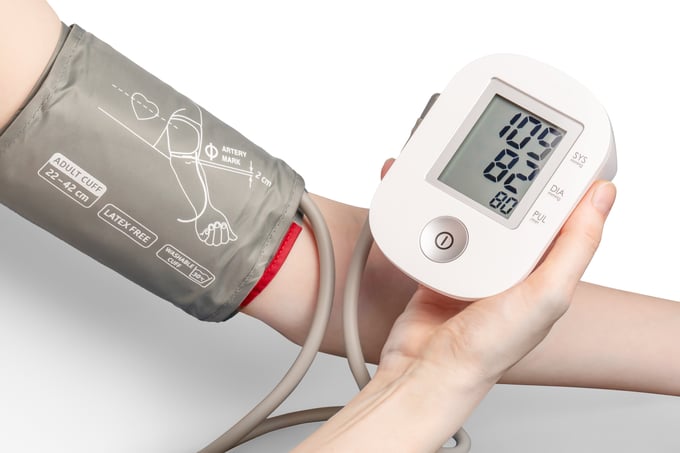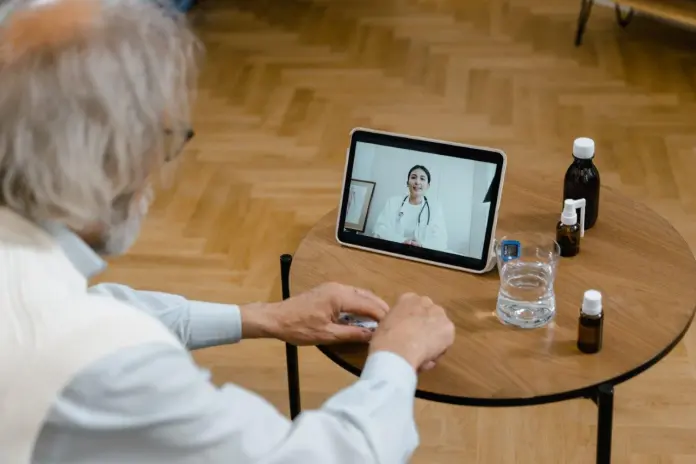Telehealth to Reduce Healthcare's Carbon Footprint?
With the National Health and Climate Strategy out for consultation highlighting telehealth as a vehicle for reducing Australia's carbon emissions, Coviu discusses the potential of telehealth to improve healthcare's environmental impact.
Developing Australia’s First National Health and Climate Strategy
The Australian Government is taking steps to address the impact of climate change on health by developing the country's first National Health and Climate Strategy. This strategy aims to reduce greenhouse gas emissions from the health system, enhance the resilience of both the health system and communities and effectively respond to the health impacts of climate change. With a focus on protecting the health and well-being of Australians, the strategy will align with existing climate mitigation and adaptation policies while considering ongoing efforts in this area.

Recommended Focus Areas
To address the increasing healthcare costs and associated emissions caused by changes in healthcare delivery and an aging population, the Consultation Paper highlights preventive measures are essential. Prevention focuses on keeping people healthy and out of the healthcare system, which can be achieved through various stages of health intervention, including primordial, primary, secondary, tertiary, and quaternary prevention. Many preventive health actions, particularly those related to primordial prevention, lie outside the healthcare system and require a "Health in all Policies" approach.
In addition to preventive measures, implementing sustainable models of care can also contribute to reducing unnecessary emissions. In line with the Consultation Paper, value-based care that avoids overdiagnosis, overtreatment, and unnecessary laboratory tests is gaining recognition. Improved healthcare management can help prevent adverse events such as medication errors and hospital-acquired infections, which lead to prolonged hospital stays and increased emissions.

Telehealth a Potential Solution
In the context of prevention and optimising models of care, telehealth is highlighted as a potential solution. Encouraging greater patient education for preventive lifestyle changes can be facilitated through telehealth. Reviewing existing health services and models of care, including telehealth and "hospital in the home" programs, will help professionals to develop a better understanding of the potential for these areas to contribute to emissions reductions. Exploring opportunities to shift models of care from acute care to primary care and self-care can be facilitated through telehealth as well. Additionally, supporting public health initiatives aimed at reducing unnecessary medical tests, treatments, and procedures can be promoted through telehealth platforms.
Telehealth plays a vital role in enabling preventive measures, optimising care delivery, and reducing unnecessary emissions by providing convenient and accessible healthcare services remotely. By incorporating telehealth into the National Preventive Health Strategy and healthcare management, we can foster a more sustainable and efficient healthcare system while promoting overall well-being and reducing environmental impacts.

Coviu's Commitment to the Environment
Coviu understands climate change poses significant threats to human health, making it crucial to address the environmental impacts of healthcare. In Australia, the healthcare industry alone contributes 7% of local greenhouse gas emissions. Transitioning to telehealth presents a key strategy to reduce the carbon footprint of healthcare while improving access to services and patient-centred care. Coviu identifies a number of opportunities for telehealth to improve healthcare's environmental impact, including:
-
Reducing our Carbon Footprint:
Telehealth offers an opportunity for healthcare organisations to adopt hybrid virtual care models, minimising the need for patients to travel to physical facilities. By reducing travel, telehealth helps decrease energy demand and carbon emissions associated with transportation. Additionally, it mitigates the environmental impact of resource-intensive activities like raw material and equipment usage in traditional healthcare settings.
-
Enabling Greater Access and Resilience:
Apart from reducing environmental harm, telehealth improves access to healthcare services, especially during natural disasters and crises such as bushfires, floods, and pandemics. It has proven invaluable in providing care to vulnerable populations, including small island states in the Oceania region that are disproportionately affected by climate change.
Telehealth Will Help Us Become More Environmentally Responsible
Telehealth holds immense potential for reducing the healthcare industry's carbon footprint, minimising waste, and improving access to care. Policy efforts are crucial to fully capitalise on this sustainable solution, with the National Health and Climate Strategy consultation process a step in the right direction. Further, by embracing telehealth and incorporating environmental considerations into corporate responsibility and ESG practices, the healthcare sector can contribute significantly to mitigating climate change.




